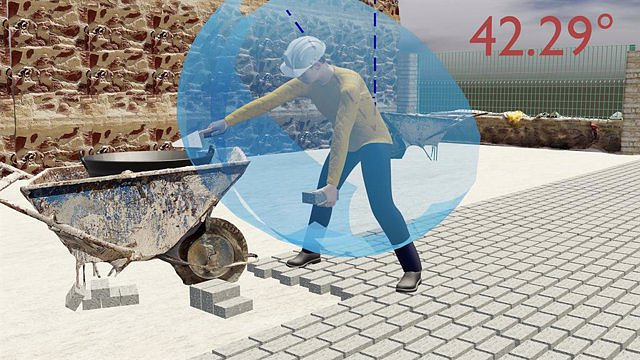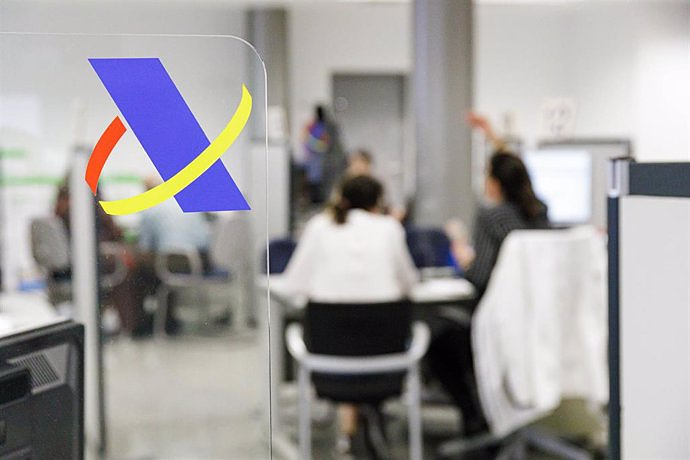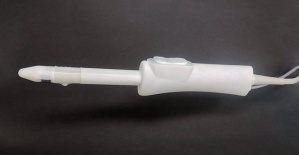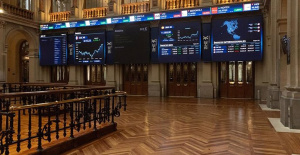VALENCIA, 21 Dec. (EUROPA PRESS) -
The Institute of Biomechanics (IBV) carries out the 'Desium' project, financed by the Valencian Institute of Business Competitiveness (IVACE) and by the European Union, whose objective focuses on the development of a virtual simulation tool for the analysis and the evaluation of the interaction between people and the products, services and environments that surround them.
Through realistic simulations it is possible to ergonomically evaluate environments and products during the different stages of the design process, from conception to final design. In this way, errors can be detected in the initial phases of the design of a product or environment to adapt them to people, allowing them to be corrected in time virtually and saving costs on physical prototypes and future redesigns. Furthermore, it is possible to maximize performance and/or comfort depending on the context of application.
The IBV emphasizes that adapting work environments to the characteristics of workers is "key" to maximizing productivity and reducing injuries and errors. The importance of putting the human being at the center of the design is especially evident in those jobs where there is a high interaction on the part of the worker with the elements present.
This is the case, for example, of work environments where there are elements of industrial machinery and manual tools, which in most cases have not been designed taking into account the variability of the working population that occupies these positions.
The director of innovation in Occupational Health and Wellbeing at IBV, Mercedes Sanchis, declares that "the use of new technologies in the work environment offers a great opportunity for companies to evaluate and design more ergonomic and efficient work environments."
To develop this new virtual simulation solution, it has been necessary to combine knowledge from different specialties such as biomechanics, 3D anthropometry and ergonomics, as well as develop specific algorithms for the generation of functional digital human models. In addition, specific tools have been incorporated that allow aspects such as postural comfort, visibility or accessibility of environments to be evaluated.
With the purpose of being a "versatile and applicable in multiple sectors" tool, leading companies in the ceramic, metallurgical and construction sectors such as Factor Ingeniería y Decoletaje, Torrescamara, Colorobbia and Keraben Grupo have collaborated in the research.
Through business collaboration, it has been possible to identify the specific needs of different sectors in relation to aspects of ergonomic evaluation and human factors of different types of work environments.
Subsequently, the jobs have been recreated virtually and digital human models representative of the workers have been included. In this way, it has been possible to realistically simulate the interactions that occur with the elements in the workplace. Thanks to these simulations, ergonomic risk can be evaluated and personalized improvement recommendations can be established to promote comfort, safety and productivity.
Unimat Prevention, the Valencia Metallurgical Business Federation (Femeval), the Valencian Federation of Construction Employers (FEVEC) and the Business Confederation of the Valencian Community (CEV) have also collaborated in the project. Likewise, the CoMMLab research department of the University of Valencia has participated in the optimization of the simulations to better understand the interaction that exists between people and their environment.

 Exploring Cardano: Inner Workings and Advantages of this Cryptocurrency
Exploring Cardano: Inner Workings and Advantages of this Cryptocurrency Seville.- Economy.- Innova.- STSA inaugurates its new painting and sealing hangar in San Pablo, for 18 million
Seville.- Economy.- Innova.- STSA inaugurates its new painting and sealing hangar in San Pablo, for 18 million Innova.- More than 300 volunteers join the Andalucía Compromiso Digital network in one month to facilitate access to ICT
Innova.- More than 300 volunteers join the Andalucía Compromiso Digital network in one month to facilitate access to ICT Innova.-AMP.- Ayesa acquires 51% of Sadiel, which will create new technological engineering products and expand markets
Innova.-AMP.- Ayesa acquires 51% of Sadiel, which will create new technological engineering products and expand markets The amnesty faces its final stretch in the Senate with the question of whether it will be voted this week or after the Catalan elections.
The amnesty faces its final stretch in the Senate with the question of whether it will be voted this week or after the Catalan elections.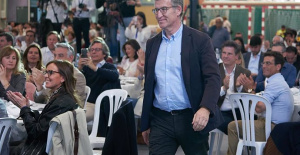 The PP will send to Moncloa the 1,136 letters from citizens with their real problems that it received in Sánchez's reflection
The PP will send to Moncloa the 1,136 letters from citizens with their real problems that it received in Sánchez's reflection Carola Miró, wife of former president of the Generalitat Quim Torra, dies
Carola Miró, wife of former president of the Generalitat Quim Torra, dies 12M.- Díaz asks Sánchez to recognize the Palestinian State in the next Council of Ministers
12M.- Díaz asks Sánchez to recognize the Palestinian State in the next Council of Ministers How Blockchain in being used to shape the future
How Blockchain in being used to shape the future Not just BTC and ETH: Here Are Some More Interesting Coins Worth Focusing on
Not just BTC and ETH: Here Are Some More Interesting Coins Worth Focusing on A sensor system obtains the fingerprint of essential oils and detects if they have been adulterated
A sensor system obtains the fingerprint of essential oils and detects if they have been adulterated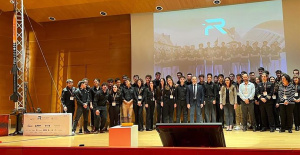 Faraday UPV presents the 'Origin' rocket to exceed 10 km of flight: "It is the beginning of the journey to space"
Faraday UPV presents the 'Origin' rocket to exceed 10 km of flight: "It is the beginning of the journey to space" The Generalitat calls for aid worth 4 million to promote innovation projects in municipalities
The Generalitat calls for aid worth 4 million to promote innovation projects in municipalities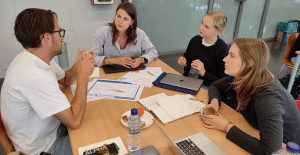 UPV students design an app that helps improve the ventilation of homes in the face of high temperatures
UPV students design an app that helps improve the ventilation of homes in the face of high temperatures A million people demonstrate in France against Macron's pension reform
A million people demonstrate in France against Macron's pension reform Russia launches several missiles against "critical infrastructure" in the city of Zaporizhia
Russia launches several missiles against "critical infrastructure" in the city of Zaporizhia A "procession" remembers the dead of the Calabria shipwreck as bodies continue to wash up on the shore
A "procession" remembers the dead of the Calabria shipwreck as bodies continue to wash up on the shore Prison sentences handed down for three prominent Hong Kong pro-democracy activists
Prison sentences handed down for three prominent Hong Kong pro-democracy activists ETH continues to leave trading platforms, Ethereum balance on exchanges lowest in 3 years
ETH continues to leave trading platforms, Ethereum balance on exchanges lowest in 3 years Investors invest $450 million in Consensys, Ethereum incubator now valued at $7 billion
Investors invest $450 million in Consensys, Ethereum incubator now valued at $7 billion Alchemy Integrates Ethereum L2 Product Starknet to Enhance Web3 Scalability at a Price 100x Lower Than L1 Fees
Alchemy Integrates Ethereum L2 Product Starknet to Enhance Web3 Scalability at a Price 100x Lower Than L1 Fees Mining Report: Bitcoin's Electricity Consumption Declines by 25% in Q1 2022
Mining Report: Bitcoin's Electricity Consumption Declines by 25% in Q1 2022 Oil-to-Bitcoin Mining Firm Crusoe Energy Systems Raised $505 Million
Oil-to-Bitcoin Mining Firm Crusoe Energy Systems Raised $505 Million Microbt reveals the latest Bitcoin mining rigs -- Machines produce up to 126 TH/s with custom 5nm chip design
Microbt reveals the latest Bitcoin mining rigs -- Machines produce up to 126 TH/s with custom 5nm chip design Bitcoin's Mining Difficulty Hits a Lifetime High, With More Than 90% of BTC Supply Issued
Bitcoin's Mining Difficulty Hits a Lifetime High, With More Than 90% of BTC Supply Issued The Biggest Movers are Near, EOS, and RUNE during Friday's Selloff
The Biggest Movers are Near, EOS, and RUNE during Friday's Selloff Global Markets Spooked by a Hawkish Fed and Covid, Stocks and Crypto Gain After Musk Buys Twitter
Global Markets Spooked by a Hawkish Fed and Covid, Stocks and Crypto Gain After Musk Buys Twitter Bitso to offset carbon emissions from the Trading Platform's ERC20, ETH, and BTC Transactions
Bitso to offset carbon emissions from the Trading Platform's ERC20, ETH, and BTC Transactions Draftkings Announces 2022 College Hoops NFT Selection for March Madness
Draftkings Announces 2022 College Hoops NFT Selection for March Madness